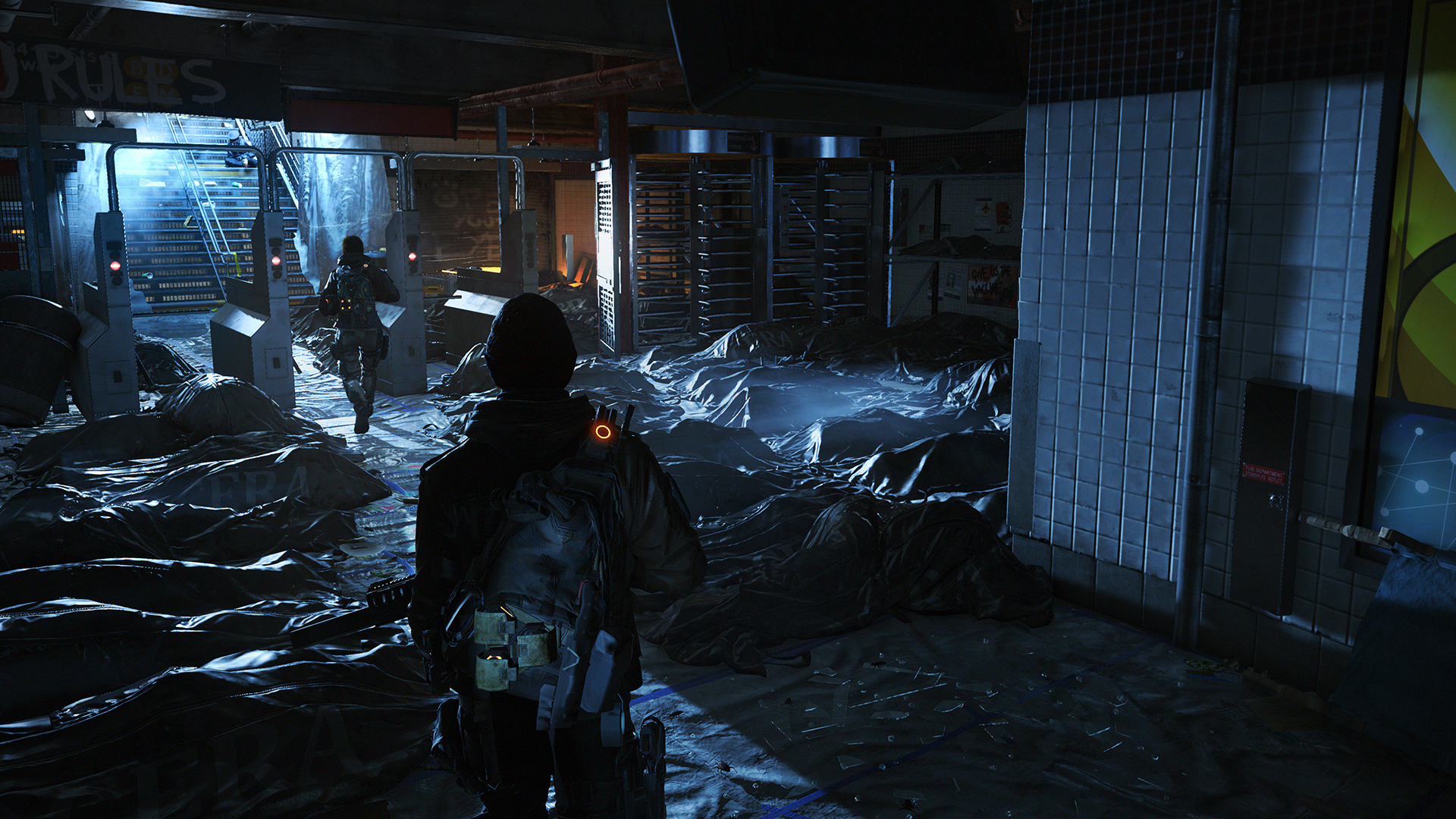The Division's Dark Zones are more DayZ than Destiny
We're standing in two rough semi-circles around a helipad, their trio and mine, and nothing's happening. I can tell one of them has some valuable gear on him by the little yellow knapsack strapped to his back, and he can tell the same of me. There aren't any emotes in Tom Clancy's The Division right now (Ubisoft is working on some) and local voice chat is disabled in this version. We just shuffle around, trying not to look aggressive.
It's not enough - somebody gets antsy, and a shot goes off. Everybody scatters and runs for cover. One of the bad guys (they shot at us… right?) fires a signal flare, and so their extraction helicopter will arrive a minute and a half later - assuming that the person who ordered the extraction isn't shot to death first.
For a PvP featherweight like me, that anxious tension made what I played of The Division's Dark Zones stand out in memory. I avoid Destiny's Crucible like I owe it money, but it's actually because I know I'm almost always going to get wrecked in a straight-up fight. I can get all the gear I need from fighting NPCs, so why take the hit to my ego? Division players who want the best gear in the game will have no choice but to enter the Dark Zones.
The post-apocalyptic plague-story justification for Dark Zones is that they were originally quarantine sites established by the US military… and the quarantine didn't work out so well. In their rush to escape and/or die of plague, the troops left behind the best arsenal in New York City. Unfortunately, it's all become riddled with super-powerful quarantine zone germs, so the only way you can take your sweet new machine gun home is to call in an extraction chopper and let them clean it up for you first.

Some players will be there just to get their loot and get gone, others to maintain a judicious order that gets everybody what they need as quickly as possible, and still others to kill you and take your stuff. This is where, if you were playing DayZ, you would hazard a nervous little, "are you cool?" into your headset. But voice chat or no, expect a lot of nervous posturing and positioning as you try to tell who will do what, peering around to see who has a tempting yellow rucksack (and who just noticed you noticing their tempting yellow rucksack).
Careful that your nice little Mexican standoff isn't interrupted by a bunch of NPCs with flamethrowers, though. Hostile factions like the Cleaners, a gang convinced they can burn away the mysterious disease that killed most of New York City, also roam the Dark Zones, and they won't wait to see whether you're friendly before they (literally) light you up. But they don't start off with big angry nameplates or red dots on the minimap - you'll have to zoom right in on a baddie or burn a radar pulse to temporarily mark them, just like identifying other players in a Dark Zone.

All those destabilizing elements make Dark Zones uncertain, unpredictable, and anxiety provoking; a powder keg rolling through a fireworks show. The other players might be more interested in striking up an alliance, adding another set of guns against the NPC raiders in hopes that you'll do the same for them later on. Or they may sandbag around until the NPCs soften you up, shoot you in the head, and take your loot. There's a metaphor for life somewhere in there.
Weekly digests, tales from the communities you love, and more
I got a BA in journalism from Central Michigan University - though the best education I received there was from CM Life, its student-run newspaper. Long before that, I started pursuing my degree in video games by bugging my older brother to let me play Zelda on the Super Nintendo. I've previously been a news intern for GameSpot, a news writer for CVG, and now I'm a staff writer here at GamesRadar.



